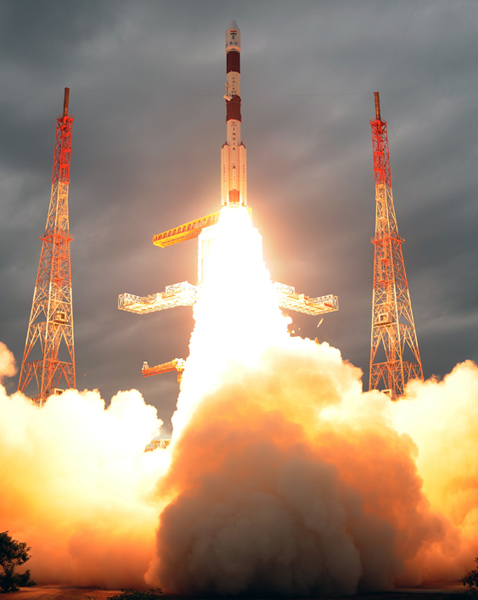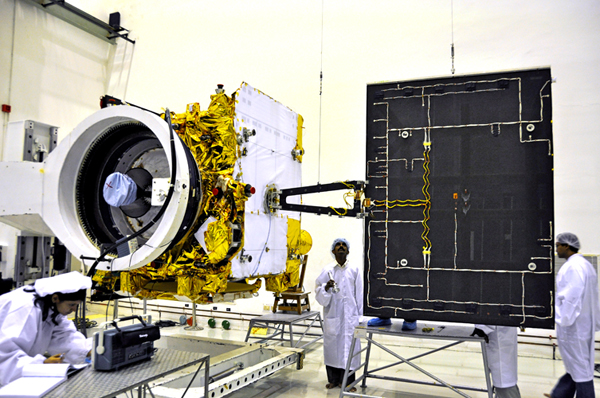India Launches New Communications Satellite

BANGALORE, India — India on Friday (July 15) successfully launched its latest communications satellite, GSat-12, aboard its Polar Satellite Launch Vehicle (PSLV). The nationally televised launch took place at 4:48 p.m. local time from the Satish Dhawan Space Centre at Sriharikota Island off India's southeastern coast.
"I am extremely happy to state that the mission is successful," K. Radhakrishnan, chairman of the Indian Space Research Organisation (ISRO) said at a post-launch press conference.

ISRO said in a statement it used a PSLV configuration with six strap-on motors, each carrying 12 metric tons of solid propellant, to place the 3,108-pound (1,410-kilogram) GSat-12 into a geostationary transfer orbit with a perigee of176 m 284 kilometers and an apogee of 7,456 miles (21,000 kilometers). ISRO said GSat-12's liquid-fueled apogee motor would be used to place the craft in a circular geostationary orbit 22,369 miles (36,000 kilometers) above the equator, where it will be co-located with ISRO’s Insat-2E and Insat-4A satellites at 83 degrees longitude.
ISRO said it was the 18th straight success for the PSLV, which normally is used to launch low Earth orbiting remote sensing satellites.
The launch marked the second time in the PSLV's 19 flights — the first flight was a failure — that the rocket has been used to place a satellite in geostationary orbit. In 2002 the launcher placed a 1090-kilogram weather satellite in geostationary orbit.
ISRO chose its dependable PSLV for GSat-2 following two consecutive failures — in April and December of 2010 — of its more powerful Geostationary Satellite Launch Vehicle. The mishaps, which destroyed a pair of communications satellites, left India with a transponder shortage.
ISRO said in a statement that GSat-12, equipped with 12 extended C-band transponders “will partly meet the country's growing demand for transponders in a short turnaround time.” GSat-12 has a design life of eight years.
This article was provided by Space News, dedicated to covering all aspects of the space industry.
Get the Space.com Newsletter
Breaking space news, the latest updates on rocket launches, skywatching events and more!
Join our Space Forums to keep talking space on the latest missions, night sky and more! And if you have a news tip, correction or comment, let us know at: community@space.com.
Dr. Killugudi S. Jayaraman holds a PhD in nuclear physics from the University of Maryland and a master’s degree in journalism from the Medill School of Journalism at Northwestern University. According to the Biotech Times, Dr. Jayaraman played a critical role in Indian science journalism, placing Indian science on a global platform. He was the first Science Editor of the Press Trust of India (PTI), editor of Nature India and Science Editor with IANS. His work can be found in many Indian and international publications.










